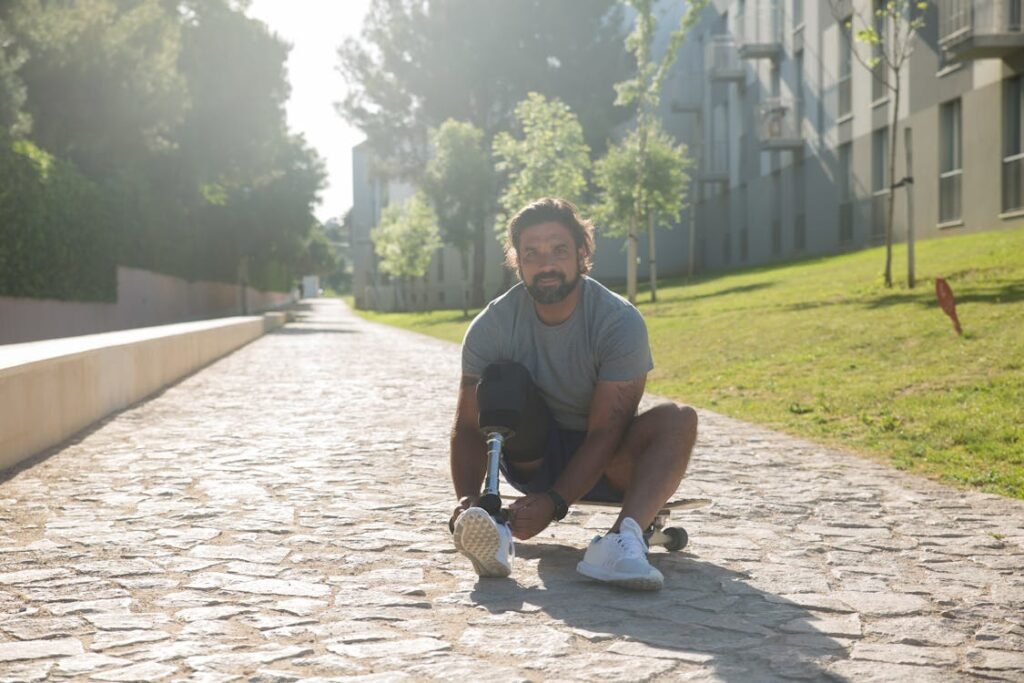Sports have a powerful way of shaping how society views people with disabilities. The Paralympics and other adaptive sports events challenge stereotypes, proving that physical limitations do not define a person’s abilities. Athletes who compete in these events inspire not only those with disabilities but also the wider public, showing the world that strength, skill, and determination exist in every individual, regardless of physical condition.
Throughout history, disability was often seen as a limitation that set people apart. However, as adaptive sports gained global recognition, perspectives began to shift. The Paralympics, in particular, has played a huge role in changing attitudes. What was once viewed as an obstacle is now seen as a challenge to be overcome. These events highlight the resilience of athletes, demonstrating that disability is not a barrier to excellence.
Beyond sports, the impact of these events extends into everyday life. They influence policies, promote accessibility, and encourage the inclusion of people with disabilities in all aspects of society. The growing recognition of adaptive sports has led to improved prosthetic technology, better support systems, and a greater sense of acceptance worldwide.
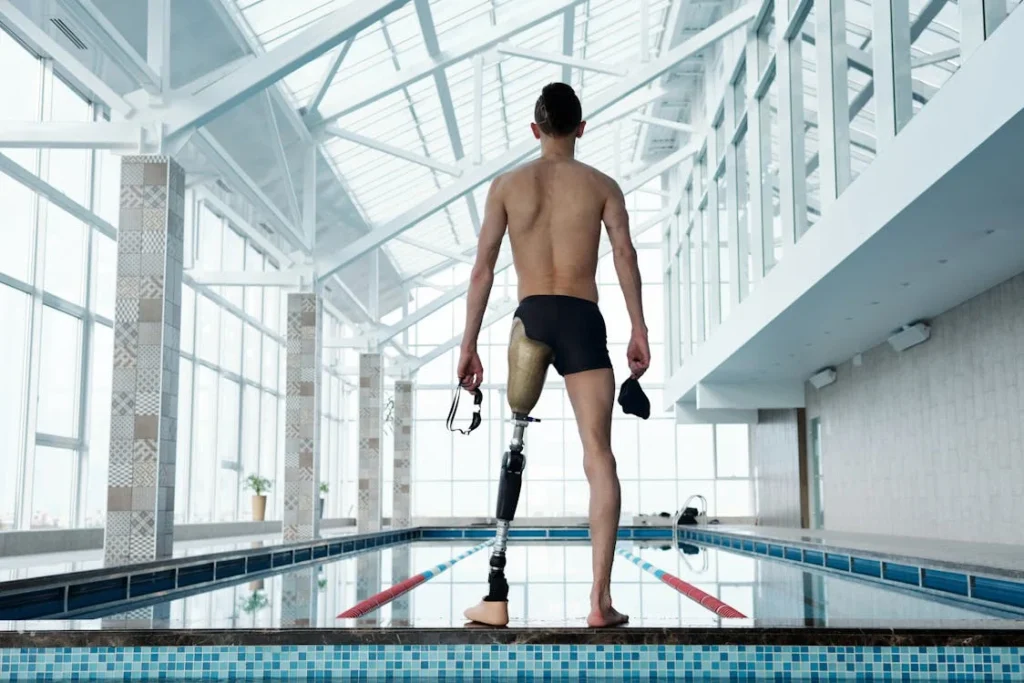
The Transformative Power of Sports in Disability Inclusion
Breaking Stereotypes Through Competition
For a long time, disability was seen as a limitation that reduced a person’s ability to contribute to society. Many cultures viewed individuals with disabilities through a lens of pity or weakness. However, sports have played a crucial role in changing this perception.
When a Paralympic sprinter races at incredible speeds or a wheelchair basketball player maneuvers with precision and skill, the world takes notice. These athletes defy expectations, proving that disability does not mean inability.
Sports create a space where ability matters more than disability. When people see a powerlifter with a prosthetic leg lifting weights heavier than most able-bodied individuals, it challenges long-held assumptions.
The focus shifts from what someone lacks to what they can achieve. This shift in perception spreads beyond the sporting world, influencing how people with disabilities are treated in workplaces, schools, and public spaces.
One of the most powerful aspects of adaptive sports is that they showcase the full range of human potential. Athletes with prosthetics, visual impairments, or other disabilities compete at the highest levels, often pushing the limits of human performance.
Their achievements send a clear message: disability does not define a person’s worth or capability.
How the Paralympics Became a Catalyst for Change
The Paralympics has been a game-changer in promoting disability inclusion worldwide. Originally created for injured war veterans in 1948, the event has since grown into an international phenomenon, attracting thousands of athletes from around the globe.
More than just a competition, the Paralympics serve as a platform for raising awareness, influencing policies, and breaking down barriers.
One of the biggest impacts of the Paralympics is visibility. For many years, disability was hidden from public view. The presence of elite athletes with disabilities on the world stage forces society to acknowledge their talent, determination, and contributions.
Watching a swimmer with a missing limb set world records or a blind sprinter cross the finish line first challenges the idea that disability is something to be pitied. Instead, it becomes a testament to resilience and skill.
This visibility extends beyond the competition itself. The increased media coverage of the Paralympics has led to more conversations about accessibility, discrimination, and inclusion.
It has also influenced government policies, leading to better infrastructure, increased funding for disability sports, and improved opportunities for people with disabilities in education and employment.
Changing Cultural Attitudes Toward Disability
Across the world, sports have played a key role in shaping cultural attitudes toward disability. In some societies, disability was traditionally seen as a burden, with people often excluded from mainstream activities.
However, as adaptive sports gained popularity, perspectives began to shift. Seeing athletes with disabilities perform at an elite level helped break down misconceptions and challenge outdated beliefs.
In countries where disability was once highly stigmatized, the success of Paralympic athletes has led to increased respect and admiration. These athletes become national heroes, changing how society perceives people with disabilities.
Their achievements are celebrated, and their stories inspire others to pursue their own dreams, regardless of physical challenges.
Sports also create role models. When a child with a disability sees someone like them excelling in athletics, it instills confidence and ambition.
It shows them that they too can participate, compete, and succeed. This representation is crucial in empowering individuals and fostering a sense of belonging.
The Role of Technology in Enhancing Performance and Perception
Advancements in prosthetic technology and adaptive equipment have further changed how society views athletes with disabilities.
High-performance running blades, robotic exoskeletons, and specialized wheelchairs have enabled athletes to push the boundaries of what was once thought possible. These innovations not only enhance performance but also shift the narrative around disability.
When a Paralympic sprinter races using carbon fiber blades, it sparks conversations about human potential and technological progress. Some even argue that advanced prosthetics might one day provide an advantage over biological limbs.
This debate challenges traditional ideas about physical ability and opens new discussions about equality in sports.
Beyond the Paralympics, these technological advancements have practical applications in everyday life. Improved prosthetic limbs, adaptive devices, and rehabilitation techniques benefit millions of people outside of sports, enhancing mobility, independence, and quality of life.
The influence of adaptive sports extends far beyond competition—it drives innovation that improves accessibility for all.
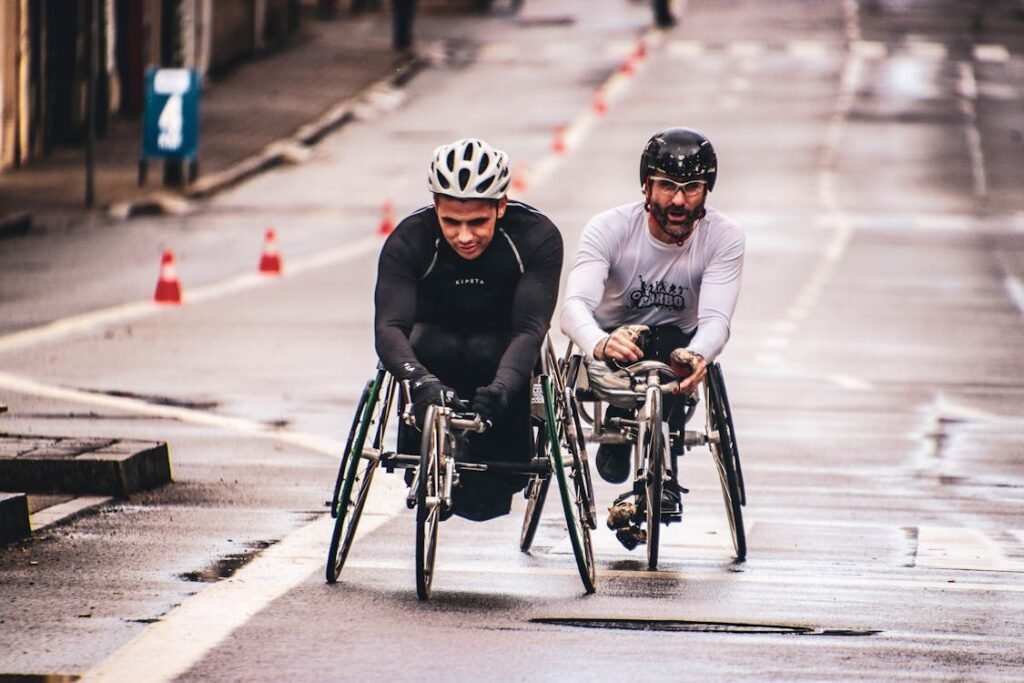
The Social and Economic Impact of Adaptive Sports
Opening Doors to Education and Employment
The influence of adaptive sports goes beyond the playing field. As more people see athletes with disabilities excelling, it shifts perceptions in education and employment.
Schools that once excluded children with disabilities from physical activities are now introducing inclusive sports programs. These changes encourage participation, helping children build confidence, teamwork skills, and a strong sense of self-worth.
The same effect is seen in workplaces. When companies witness Paralympic athletes breaking records, they start to reconsider outdated hiring practices.
Employers begin to see ability rather than limitations. Athletes with disabilities become ambassadors for inclusion, proving that people with prosthetics or other adaptive devices can be just as capable, hardworking, and competitive as their able-bodied counterparts.
This change in perception creates more opportunities for people with disabilities. Organizations that support adaptive sports often work alongside companies to develop workplace policies that encourage inclusivity.
More businesses are investing in accessibility, ensuring that offices, meeting rooms, and workspaces accommodate individuals with mobility challenges. In turn, this leads to greater economic independence and social integration for people with disabilities.
The Economic Power of the Paralympics
Beyond personal and professional opportunities, adaptive sports have become an economic force. The Paralympics, for example, attracts millions of viewers worldwide, generating revenue through sponsorships, ticket sales, and broadcasting rights.
Large corporations and global brands are now investing in Paralympic athletes, just as they do with Olympic competitors.
This sponsorship boom not only benefits individual athletes but also funds disability programs, research, and innovation. As more companies invest in adaptive sports, the financial backing leads to improved facilities, better training programs, and increased visibility for disability rights.
The growing commercial success of the Paralympics proves that there is widespread public interest in high-performance adaptive sports, further strengthening the case for inclusion.
The economic benefits also extend to tourism and infrastructure. Host cities for the Paralympics invest in accessible transportation, hotels, and public spaces.
These improvements remain long after the event ends, benefiting the wider disability community. Countries that embrace adaptive sports often experience a cultural shift where accessibility is no longer seen as an afterthought but as a fundamental part of urban planning.
Inspiring Future Generations
Perhaps the most lasting impact of sports on disability acceptance is the way it inspires future generations. When children see Paralympic athletes competing at the highest level, they gain new role models.
A young girl with a prosthetic leg watching a Paralympic sprinter can now dream of becoming an athlete herself. A boy using a wheelchair might see a basketball team that looks like him and realize he too can play.
Representation matters. Seeing people with disabilities thrive in sports changes the way children view their own potential. It also influences their peers, teaching them that disability is not something that sets someone apart, but simply a different way of moving through the world.
Governments and organizations recognize this impact and are investing in grassroots programs to encourage young athletes with disabilities. More schools are incorporating adaptive sports into their curriculums, and community centers are building accessible sports facilities.
These efforts ensure that the next generation grows up in a world where sports are truly inclusive, and where every individual, regardless of ability, has the chance to compete, excel, and inspire.

The Role of Media in Shaping Perceptions of Adaptive Sports
The Power of Representation in Mainstream Media
The way sports are presented in the media has a huge impact on how people perceive athletes with disabilities. For many years, adaptive sports received little to no coverage, leaving Paralympic athletes and other disabled competitors in the shadows.
However, as media coverage has increased, so has public awareness and acceptance. Today, the Paralympics are broadcast globally, reaching millions of viewers and challenging outdated beliefs about disability.
When people see athletes with prosthetics running at world-class speeds or wheelchair rugby players demonstrating incredible agility and strength, it shifts the narrative.
These images replace pity with admiration, proving that sports are not about limitations but about skill, strategy, and determination. The more exposure adaptive sports receive, the more society begins to see disability through a different lens—one of capability, resilience, and success.
However, there is still a long way to go. While coverage has improved, Paralympic events still receive significantly less airtime than the Olympics. Many networks treat adaptive sports as secondary, airing events at inconvenient times or providing limited commentary.
When athletes with disabilities are given equal media attention, it reinforces the idea that they are just as elite and deserving of recognition as their able-bodied counterparts.
Challenging Narratives: Beyond “Inspiration”
One common issue in the portrayal of adaptive sports is the tendency to frame Paralympic athletes solely as sources of inspiration. While their achievements are undeniably impressive, focusing only on their struggles can be limiting.
Many disabled athletes want to be recognized not just for “overcoming adversity” but for their athletic skill, competitive spirit, and dedication to their sport.
When media coverage shifts away from purely emotional storytelling and instead highlights athletic strategy, training regimens, and rivalries, it places Paralympic athletes on the same level as any other elite competitors.
This approach normalizes disability in sports, reinforcing the idea that these athletes should be celebrated for their talents rather than treated as exceptions.
The media also plays a role in breaking down stereotypes. When reporters use empowering language—describing athletes by their strengths rather than their impairments—it changes how audiences perceive disability.
Instead of framing adaptive sports as “incredible despite the odds,” the narrative becomes one of natural inclusion: these athletes belong on the world stage, not as a side story, but as part of the global sports community.
Social Media and the Rise of Athlete-Driven Content
With the rise of social media, athletes with disabilities have taken control of their own narratives. Platforms like Instagram, YouTube, and TikTok allow Paralympians and adaptive sports competitors to share their journeys in real time, reaching audiences without relying on traditional media.
Athletes can now showcase their training routines, personal challenges, and victories, building direct connections with fans. This shift has made adaptive sports more visible and accessible, inspiring more people with disabilities to engage in sports themselves.
It has also humanized athletes, showing that they experience the same highs and lows as any other competitor.
Additionally, social media has given a voice to advocates fighting for equal recognition. When broadcasting networks fail to cover Paralympic events fairly, online movements emerge, demanding better representation.
Hashtags like #WeThe15 (a campaign advocating for the 15% of the world’s population with disabilities) have gained traction, encouraging meaningful discussions about inclusion in sports and society.
The Long-Term Impact of Media Representation
As media coverage of adaptive sports continues to grow, the long-term impact is undeniable. The visibility of elite athletes with disabilities influences policy changes, improves funding for adaptive sports, and encourages the development of better prosthetic and assistive technology.
More importantly, it challenges outdated societal norms, showing that disability is not a barrier to success but simply one part of the human experience.
When Paralympians receive the same respect, recognition, and sponsorship opportunities as their Olympic peers, it signals a shift toward true inclusion.
The more people see adaptive sports on their screens, the more normalized they become. In turn, this greater acceptance leads to more accessible environments, better opportunities, and a culture that values ability over limitation.
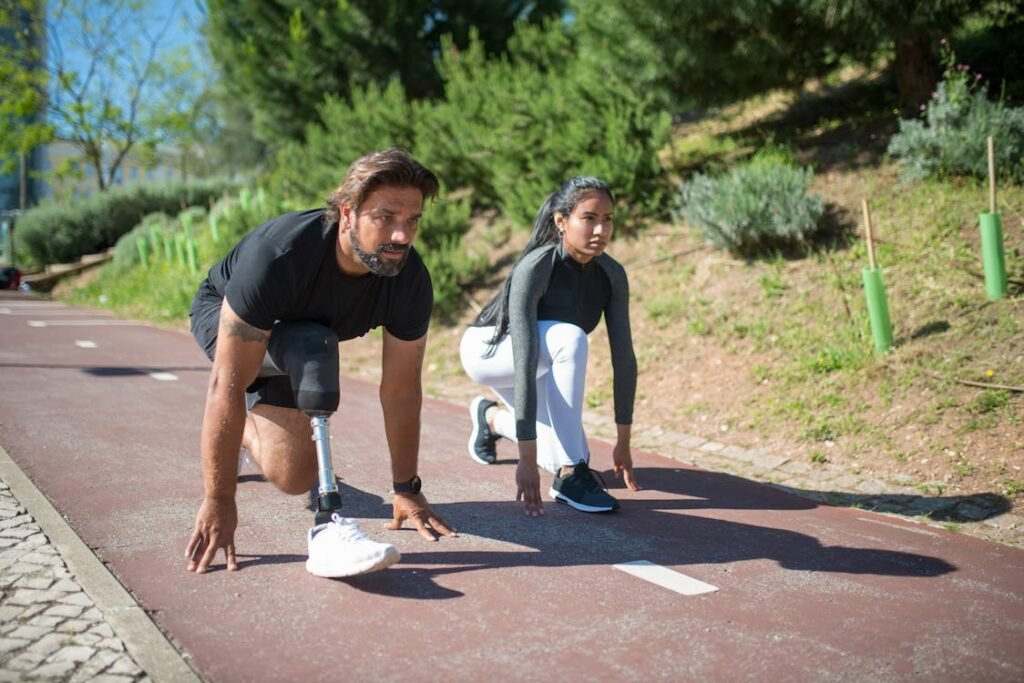
The Evolution of Accessibility and Inclusion Through Sports
How Adaptive Sports Drive Policy Changes
The rise of adaptive sports and the global recognition of events like the Paralympics have not only changed public perception but also influenced real-world policies.
As athletes with disabilities continue to prove their capabilities, governments and organizations have been pushed to make lasting changes that promote accessibility and inclusion in all aspects of life.
One of the biggest areas of improvement has been in infrastructure. Many cities that have hosted the Paralympics have made permanent changes to ensure better accessibility for people with disabilities.
Public transportation, stadiums, and community spaces have been redesigned with ramps, elevators, and assistive features, allowing for greater mobility. These improvements don’t just benefit athletes—they create a more inclusive environment for everyone.
Education systems have also evolved due to the influence of adaptive sports. Schools are now introducing inclusive physical education programs, ensuring that children with disabilities have the same opportunities to participate in athletics as their peers.
More universities are offering scholarships for adaptive athletes, helping them gain higher education while continuing their training. This shift not only fosters talent at a young age but also builds confidence in individuals who may have once been excluded from sports entirely.
The Role of Companies and Sponsors in Driving Change
Corporate sponsorship has played a major role in advancing accessibility through adaptive sports. When major brands and corporations invest in Paralympic athletes, it sends a strong message that disability inclusion is not just an act of goodwill—it is an important and valuable aspect of society.
These sponsorships allow athletes to access high-quality training, equipment, and medical care, leveling the playing field between adaptive sports and mainstream athletics.
In addition to funding athletes, companies have started integrating accessibility into their own workplaces and business models. Employers are recognizing that hiring people with disabilities is not about charity but about finding skilled and dedicated individuals who bring unique perspectives to their teams.
Many organizations are now working with Paralympic athletes and disability advocates to improve workplace accessibility, ensuring that offices, technology, and policies support a diverse workforce.
The influence of adaptive sports extends even further into product design. Athletic brands are now creating specialized footwear, prosthetic-friendly clothing, and adaptive sports gear that cater to a wider range of athletes.
These innovations benefit both professional and amateur athletes, making it easier for individuals with disabilities to participate in sports at all levels.
Changing Mindsets: From Charity to Equal Opportunity
One of the most significant shifts driven by adaptive sports is the move from seeing disability as a condition that requires charity to recognizing people with disabilities as equals who deserve the same opportunities as everyone else.
Before the widespread recognition of Paralympic athletes, many programs for people with disabilities were structured around assistance rather than empowerment. Today, the focus has shifted toward enabling individuals to thrive, whether in sports, education, or employment.
When people see Paralympic athletes achieving incredible feats, it reinforces the idea that given the right resources and opportunities, people with disabilities can accomplish anything.
This shift in mindset has been reflected in policies that promote inclusion rather than exclusion. Governments and businesses are now focusing on providing accessible infrastructure, technology, and opportunities that empower rather than isolate.
This transformation is also evident in sports federations and committees that oversee global athletics. More governing bodies are integrating adaptive categories into mainstream competitions, allowing disabled and able-bodied athletes to compete in the same events where possible.
This integration highlights the fact that adaptive sports are not separate or secondary—they are an essential and equal part of the sports world.
A More Inclusive Future Through Sports
The influence of adaptive sports will only continue to grow. As more Paralympic athletes gain recognition, and as more individuals with disabilities engage in sports, society will become even more inclusive.
The changes we see today—from improved accessibility in cities to evolving workplace policies—are just the beginning.
Sports have always had the power to unite people across cultures, and adaptive sports are proving that this unity extends to people of all abilities.
By continuing to support and celebrate adaptive athletes, we move toward a future where disability is not seen as a barrier but as a part of human diversity that enriches our world.
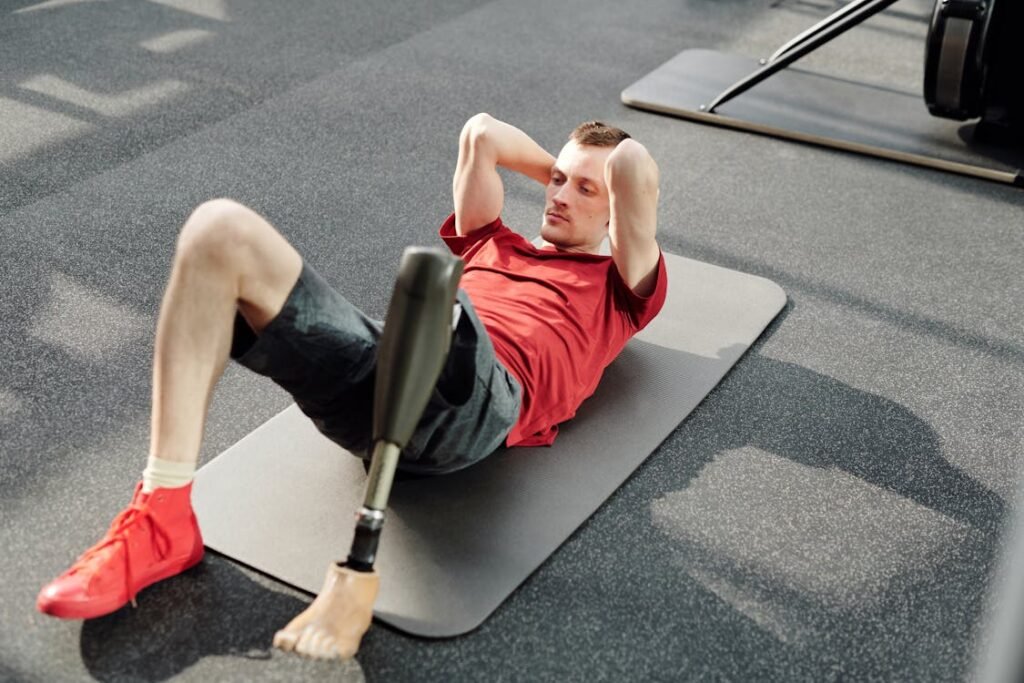
The Psychological and Emotional Impact of Adaptive Sports
Building Confidence and Self-Worth
Participating in sports has always been a way for individuals to build confidence, discipline, and resilience. For athletes with disabilities, adaptive sports play an even greater role in shaping self-perception and personal growth.
The experience of training, competing, and achieving goals provides a powerful sense of self-worth that extends far beyond the playing field.
Many people with disabilities, especially those who acquire them later in life, struggle with self-image and feelings of isolation. Sports provide a way to regain a sense of control and purpose.
Training for competition teaches discipline and perseverance, helping athletes push past physical and mental barriers. The act of setting goals—whether it’s running a certain distance, lifting a specific weight, or mastering a new skill—gives athletes a tangible sense of progress, reinforcing the idea that their abilities are always growing.
For young people with disabilities, being part of a sports team can be life-changing. It allows them to form friendships, develop leadership skills, and feel a sense of belonging.
Instead of being seen as “different” or “limited,” they become athletes—competitors who are recognized for their dedication and hard work. This shift in identity can have a lasting impact, shaping the way they approach challenges in other areas of life, such as academics and career development.
Overcoming Trauma Through Sports
For many individuals who acquire disabilities due to accidents, illness, or war injuries, adaptive sports provide a path to recovery—not just physically, but emotionally.
Adjusting to life with a disability can be overwhelming, leading to feelings of frustration, loss, and even depression. Sports offer a structured way to regain physical strength while also rebuilding mental resilience.
Veterans, in particular, have found adaptive sports to be a crucial part of rehabilitation. Programs designed for wounded soldiers use sports as a form of therapy, helping them adapt to prosthetics or new ways of movement.
The competitive nature of sports gives them a renewed sense of purpose, allowing them to focus on what they can achieve rather than what they have lost.
Similarly, individuals recovering from traumatic injuries often experience renewed motivation when they engage in adaptive sports. Instead of seeing themselves as victims of circumstance, they become athletes in pursuit of excellence.
This shift in perspective is a powerful step toward healing, both physically and emotionally.
Mental Health Benefits of Competitive and Recreational Sports
The psychological benefits of sports extend beyond elite competition. Recreational sports, such as swimming, cycling, and yoga, provide an outlet for stress relief and overall well-being.
People with disabilities often face higher rates of mental health challenges due to social isolation, accessibility barriers, and societal biases. Engaging in sports helps combat these issues by promoting physical activity, social connection, and a sense of accomplishment.
Exercise has been proven to boost mood by releasing endorphins, reducing anxiety, and improving sleep. For individuals with disabilities, maintaining an active lifestyle is particularly important, as it can also improve circulation, mobility, and overall physical health.
In team-based adaptive sports, the sense of camaraderie plays a key role in mental health. Athletes build strong bonds with teammates who share similar experiences, creating a support system that extends beyond competition.
These friendships help combat feelings of loneliness and provide encouragement during difficult times.
The Psychological Impact on Society
The benefits of adaptive sports are not limited to athletes alone. Watching individuals with disabilities excel in sports challenges societal perceptions of what is possible.
When people witness a Paralympic athlete breaking records, it reshapes their understanding of disability. Instead of viewing it as a limitation, they begin to see it as a different way of navigating the world.
This shift in mindset reduces stigma and promotes greater inclusion. It encourages more communities to invest in accessibility, ensuring that people with disabilities have equal opportunities to engage in sports and other activities.
Over time, as adaptive sports continue to gain recognition, society as a whole moves toward a more accepting and inclusive future.
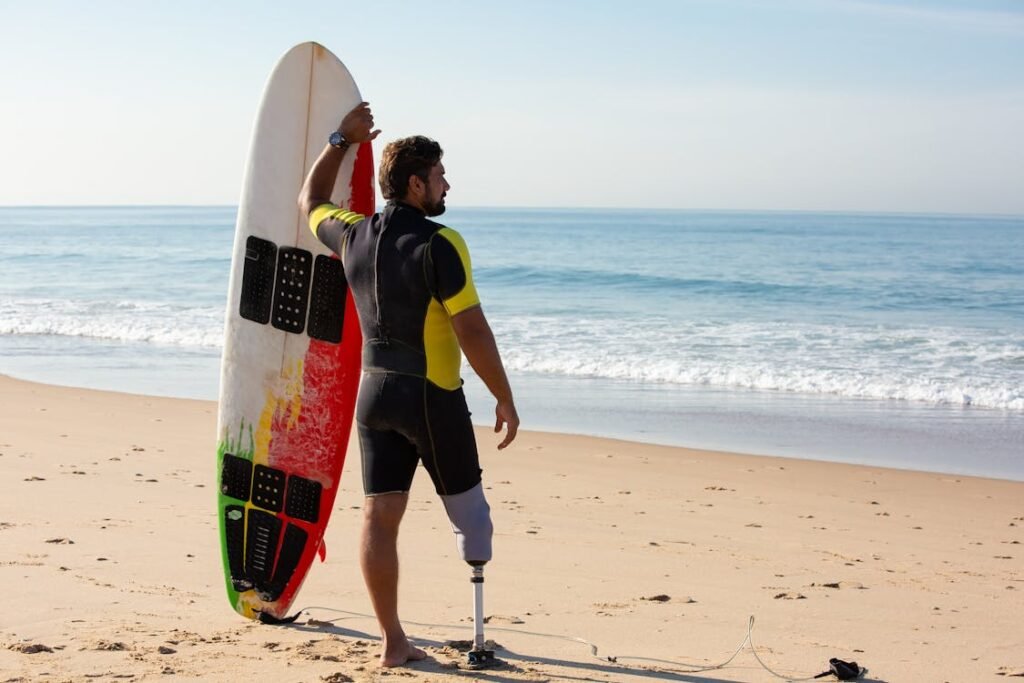
The Influence of Adaptive Sports on Prosthetic and Assistive Technology Innovation
How Paralympic Athletes Drive Technological Advancements
The demands of high-performance sports have pushed the boundaries of prosthetic and assistive technology, leading to innovations that benefit not only elite athletes but also everyday prosthetic users. Competitive sports require prosthetics that are lightweight, durable, and capable of handling extreme movement.
As a result, engineers and researchers have developed cutting-edge materials and biomechanical designs that enhance both function and comfort.
One of the most well-known advancements inspired by adaptive sports is the development of carbon fiber running blades. These prosthetic limbs, famously used by Paralympic sprinters, allow athletes to achieve remarkable speeds while maintaining balance and stability.
The success of this technology has influenced the broader prosthetic industry, leading to improvements in everyday prosthetic limbs that prioritize flexibility, shock absorption, and energy return.
Beyond running blades, innovations in upper-limb prosthetics have also been influenced by adaptive sports. Athletes who participate in sports like rowing, cycling, and archery require prosthetic arms that provide precision and control.
This has led to the creation of multi-grip bionic hands, customizable socket designs, and improved neural interface technology that allows for more intuitive movement.
The Crossover Between Sports and Everyday Prosthetic Use
While many of these advancements begin in the competitive sports world, they eventually trickle down to benefit individuals who use prosthetics in their daily lives.
Lightweight, high-strength materials developed for Paralympians are now being incorporated into regular prosthetic limbs, making them more comfortable and efficient for everyday activities.
The need for adaptive sports equipment has also led to innovations in assistive devices beyond prosthetics. High-performance wheelchairs designed for basketball, tennis, and racing have influenced the design of everyday mobility aids, making them more ergonomic, maneuverable, and adaptable to different environments.
These improvements enhance the independence of wheelchair users, whether they are athletes or simply navigating urban spaces.
Additionally, exoskeleton technology, initially developed for athletes with spinal cord injuries, is now being tested for rehabilitation and everyday mobility assistance.
These wearable robotic suits help individuals regain movement, demonstrating how sports-driven research can lead to life-changing advancements in healthcare and rehabilitation.
Industry Partnerships and the Future of Adaptive Technology
The growing visibility of adaptive sports has led to increased investment from tech companies, universities, and medical researchers. Sports science labs now collaborate with prosthetic manufacturers to develop solutions that enhance both athletic performance and real-world usability.
One of the most exciting areas of research is the integration of artificial intelligence (AI) and robotics into prosthetic design. AI-powered prosthetics can adapt to different terrains, predict user movements, and provide sensory feedback, making them feel more like natural limbs.
These advancements have the potential to revolutionize not only sports performance but also the daily lives of individuals with disabilities.
As technology continues to evolve, adaptive sports will remain at the forefront of innovation. The challenges faced by Paralympic athletes push researchers to develop better solutions, ultimately improving accessibility, mobility, and quality of life for millions of people worldwide.
Conclusion
Adaptive sports and the Paralympics have played a transformative role in changing how society views disability. These events have shattered stereotypes, proving that people with disabilities are not defined by limitations but by their strength, determination, and skill. Through media coverage, technological advancements, and increasing visibility, adaptive athletes have inspired change far beyond the sporting world.
The impact of these sports extends into education, employment, infrastructure, and accessibility policies. They have driven innovation in prosthetic and assistive technology, making life easier for millions of people, not just elite athletes. More importantly, they have reshaped public attitudes, fostering greater acceptance and inclusion of individuals with disabilities in everyday life.
As adaptive sports continue to grow, their influence will only expand, pushing for a more inclusive world where ability—not disability—defines an individual. The message is clear: sports are not just about competition; they are about breaking barriers, building confidence, and creating opportunities for everyone, regardless of physical ability. The future of disability inclusion is being shaped on the track, the field, and the court, proving that the human spirit knows no limits.



